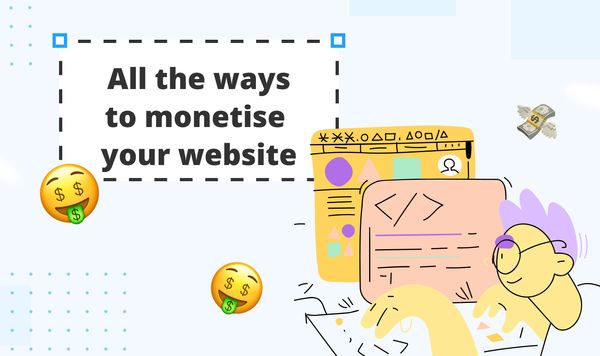How to develop a fitness app
Taking your fitness business to the next level with an app is a logical progression and one that could create profitability, branding recognition, and incredible reach. You don’t have to learn the detailed coding or invest months in a development process you’re unsure about, though.
Utilizing this fitness app development guide, you’ll be able to work with our team at GuruCan to create your fitness app from idea to launch in the App Store in no time and without having to think twice about coding skills.
Create a plan for your fitness app
To get started, you’ll first need to brainstorm the key features you want and need, the overall layout, and what’s going to make your app unique. Consider these features that resonate with today’s fitness app users:
- Personalization: Your app users want to choose how they stay active based on their lifestyle and interests. Giving them the ability to personalize their workouts can be a valuable option. You also may want to consider AI applications that could learn how your app user likes to work out and create custom workouts for them over time.
- Community engagement: The best way to keep people using and sharing your app is to create community engagement opportunities. Consider how users can share, ask questions, and get the most out of the app.
- Goal tracking: Many people are goal-oriented, and they want an app that helps them set and keep their goals. This is one of the most important components of today’s fitness app. Blend workouts with a nutrition planning tool so they are consistently monitoring their overall health objectives.
Ultimately, you’ll want to pair down all of the fantastic ideas you have and choose the type of app you want to create. That includes:
- Activity or fitness-tracking apps
- Diet and nutrition-based apps
- Workout apps
- Holistic approaches
Once you have a working idea of what you want to create, it's time to refine it.
Fitness app development: create a plan
Here are the steps you’ll likely need to follow to achieve your best overall outcome. This is the hard work you have to do, but once you have a plan, you can count on our team to pull it all together for you.
1. Identify who you want to help and research the competition
Today, there is an app for anything — from fitness to employee training. And the first key to success of any app is identifying your key audience.
Define your ideal app customer based on demographics, life events, goals, or other specific factors. For example, you may be developing an app specifically for women to use after giving birth, or your target audience may be 20-somethings into HIIT.
Once you know who you wish to target, take a closer look at the App Store. You certainly don’t want to duplicate what’s out there, but you need to know what your competition is. Some market research can help you to see:
- Potential gaps in the types of services offered
- What customers say positively about current apps
- What customers say are the challenges to using the app
Use this information to create a goal. Outline the type of app you want to create, the target customer you want to download that app, and the specific advantage your app will offer over others.
2. List the fitness app features you must have
Utilizing all features on this list can bog down your fitness app. However, you can work with the types of features that are right for your specific goals. Here are some of the most sought-after fitness app features:
- Live streaming: For a higher-end, engaged app design
- Built-in marketing tools: Options for email campaigns, promotions, and customer retention strategies, such as promotional offers
- Analytics: A key component is that analytics helps you see how people are using your app and how well your subscriptions are growing.
- Membership options: How will you provide access, and will there be different tiers of access?
- Payment integration: This often is a necessity, but you’ll need to address the types of payment methods desired
- User profiles: Engagement through profiles, as well as goal-tracking, saving favorite features, and personalized content recommendations require user profiles
3. Determine how you will monetize your fitness app
Various options exist, including the freemium model (which gives users a free basic version with options to upgrade to premium content). This tends to be the most desirable option because it brings people in who may want to try something out before they use it.
Other options include subscriptions, such as monthly or yearly fees, in-app purchase methods, and advertising-based revenue. You may want to establish a paywall for exclusive content and sell merch on your app. Don't overlook the benefits of partnerships.
4. Make your app engaging and fun
Gamifying your app is a very important consideration because it keeps people interested. Gamification simply means that the app is enjoyable, which can mean it’s stress-relieving. By creating a reward-focused app, you’re encouraging your users to keep wanting to come back to use it. It’s that process that helps create highly effective and long-used apps.
5. Decide on the build
Once you have a solid plan in place for your app, it’s time to make a decision. You can build your own app (and our White Label App tools allow you to do just that), or you can work with a team to create an app for you.
Developing an app yourself utilizing our platform does not take forever or require any coding. Rather, you’ll follow a tested, proven model for building out your app’s features and details using branded content you create. You choose color, designs, logos, and content. You can choose the level of support you need. And you’ll be able to get your fitness app from idea to App Store in about 30 days.
Moving your process forward
Once you’ve developed the app, here’s what you can expect as the next steps to get your fitness app in the stores, ready to download:
- Test out your app and work through any changes you want to make.
- Submit your app to the app stores, including Google Play Store and Apple’s App Store. You’ll need to meet their design guidelines.
- Start tracking your analytics and building onto your app with additional features to further support its growth.
With GuruCan's proven process of developing an app, testing it, configuring it, and working through the features and options, you can complete this process quickly.
Market your app
1. Define your target audience and messaging
Marketing a fitness app starts with a deep understanding of your ideal users. Begin by defining your target audience's demographics, lifestyle habits, and goals. Consider whether your app appeals more to beginners looking to start their fitness journey, advanced athletes, or niche audiences like those interested in yoga, HIIT, or bodybuilding. Once you have a clear picture, create a value proposition that speaks directly to their needs, highlighting how the app uniquely supports their fitness goals.
Tips for audience research:
- Conduct surveys or interviews with potential users.
- Analyze competitors to identify gaps or unique strengths.
- Use analytics tools to understand user behavior and preferences.
2. Leverage social media for brand visibility
Social media platforms are essential for creating a buzz around your app. Platforms like Instagram, TikTok, and YouTube are perfect for visually engaging fitness audiences, as they thrive on workout videos, tutorials, and success stories. Regularly post content showcasing your app’s features, user success stories, and workout tips to keep followers engaged and informed. Using fitness influencers or micro-influencers can help you reach wider audiences authentically, as users are more likely to trust recommendations from personalities they follow.
Effective social media strategies:
- Share daily or weekly workout challenges using hashtags.
- Partner with fitness influencers to promote the app.
- Post short, engaging reels or videos that showcase app features or workouts.
3. Invest in SEO and content marketing
Develop a blog or YouTube channel to share valuable fitness content, such as workout guides, diet tips, and exercise tutorials. Optimize each piece with keywords related to your app’s focus, like “best workout for beginners” or “HIIT workouts at home.” Well-researched, informative content attracts organic traffic and positions your app as an authority in the fitness niche. Additionally, consider guest blogging or partnering with fitness websites to extend your reach.
Ideas for SEO-friendly content:
- “10-minute workouts for busy professionals”
- “How to create a balanced workout plan”
- “Beginner’s guide to building muscle”
4. Use app store optimization (ASO) techniques
App store optimization (ASO) is crucial for improving your app’s visibility in app stores. Optimize your app’s title, description, and keywords with phrases users are likely to search for, like “fitness tracker app” or “at-home workout app.” Include high-quality images, demo videos, and positive reviews to encourage downloads. Remember to monitor app performance and user feedback, updating your ASO strategy to reflect trending keywords and improve your app’s discoverability.
Key ASO strategies:
- Optimize title and description with relevant keywords.
- Encourage positive reviews by providing a great user experience.
- Regularly update screenshots and videos to highlight new features.
5. Run targeted paid ads
Paid ads can give your app an initial boost, especially in crowded markets. Platforms like Google Ads, Facebook, and Instagram allow you to create highly targeted ad campaigns that reach users based on demographics, interests, and behaviors. Consider using ads to promote free trials or discounts, encouraging users to try your app. Paid ads also provide measurable insights, allowing you to refine campaigns and maximize your ad spend’s impact.
Tips for effective ad campaigns:
- Use visuals that show real people using the app in various settings.
- A/B test different ad copies and visuals to find the most effective combinations.
- Monitor performance and adjust targeting as needed.2/24o
6. Create a website for your fitness app
A well-designed website is essential for establishing credibility, enhancing user trust, and driving conversions. While app stores are the primary download source,
a website can serve as a central hub for information, support, and marketing initiatives.
Overall, there are many convincing reasons to build a website for your app. You can use the site to highlight the app's key features, provide tutorials, and even include testimonials from satisfied users. With a website, you also have the opportunity to optimize for SEO, attracting organic traffic and building visibility beyond app store searches.
Steps to create an effective website:
- Choose a domain name: Select a domain that matches your app name to create consistency and make it easy for users to find.
- Optimize for SEO: Use keywords that potential users might search for, such as “best fitness app for beginners” or “home workout tracker.”
- Highlight features and benefits: Create dedicated sections that showcase the app's unique features, like personalized workout plans, progress tracking, and in-app community support.
- Add testimonials and case studies: Include user success stories to provide social proof and demonstrate the app's impact.
- Offer support and contact options: Ensure there’s an easy way for visitors to contact you with questions or support requests, such as a contact form or live chat feature.
Tools to create your website quickly:
Platforms like SpreadSimple make it possible to build a high-quality, visually appealing website in just 30 minutes, even if you don’t have technical skills. By connecting with Google Sheets, SpreadSimple allows you to manage content effortlessly, enabling you to update features, testimonials, or pricing in real-time without complex coding.
Creating a website helps boost your app’s discoverability and offers a professional platform to engage users beyond mobile devices.



